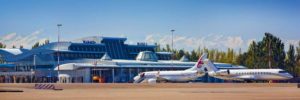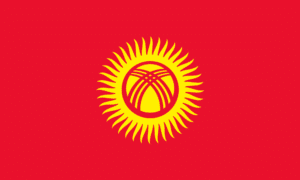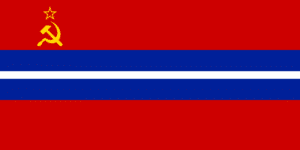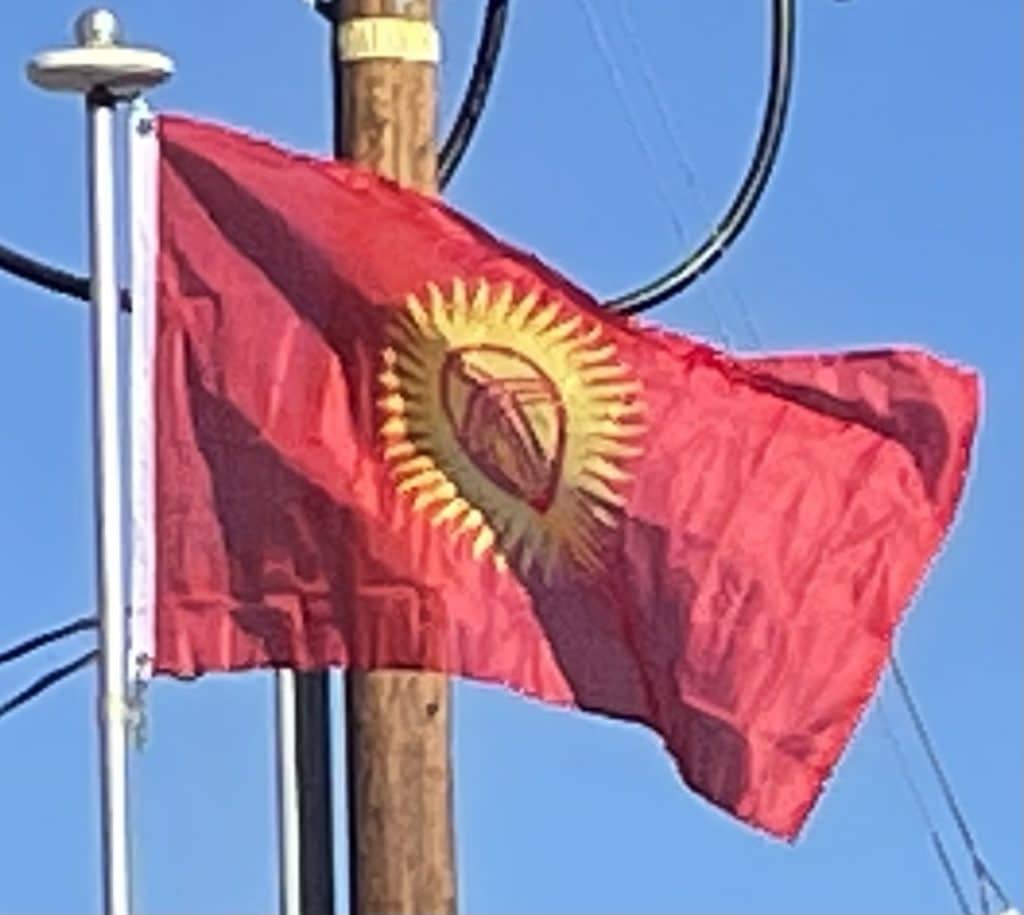The total length of the road network in Kyrgyzstan is approximately 34,000 km. Of them, 7,728 are paved in some manner.
The condition of the road network is generally bad, though repairs have been made recently. Usually, only the main roads of population centers are illuminated, and drain lids might be missing on both streets and sidewalks. The roads are often not plowed during winters. Fuel stations are rare outside Bishek and Osh.
At the end of the Soviet period there were about 50 airports and airstrips in Kyrgyzstan, many of them built primarily to serve military purposes in this border region so close to China. Only a few of them remain in service today.

There are four airports with international flights, namely in Bishkek, Osh, Tamchy and Karakol.
Flag of Kyrgyzstan:
The flag of Kyrgyzstan consists of a red field charged with a yellow sun that contains a depiction of a tunduk, the opening in the center of the roof of a yurt (traditional tent). It is actually a depiction of the first thing one sees when waking up in a yurt, namely the construction of the pinnacle of every Kyrgyz yurt with three crisscrossing laths across the circular opening at the top of the yurt. Adopted in 1992, just over seven months after the country’s independence was declared, to replace the flag of the Kirghiz Soviet Socialist Republic (SSR), it has been the flag of the Kyrgyz Republic since that year. Although the color of the flag is identical to the former Soviet flag, the red is said to be inspired by the pennant lifted by Manas, the country’s folk hero.

Under Soviet rule, the Union Republic — coterminous with modern-day Kyrgyzstan — utilized a flag derived from the flag of the Soviet Union and representing Communism, that was adopted in 1953. It declared itself independent on August 31, 1991, approximately four months before the dissolution of the Soviet Union. Nevertheless, the Soviet-era flag maintained its status as the national flag for seven months after independence was declared. It was finally replaced by the new design on March 3, 1992.

The colors and symbols of the flag carry cultural, political, and regional meanings. The red field stands for “bravery and valor”, and alludes to the purported emblem hoisted by Manas, the national hero of Kyrgyzstan. The sun epitomizes peace and prosperity, while its 40 rays stand for the number of tribes united by Manas to fight against the Mongols, as well as the number of followers he had.
The center of the sun features a stylized illustration of the roof (tunduk) atop a traditional Kyrgyz tent (yurt) when viewed from the interior. Although these tents are less commonly used today, its incorporation into the flag is meant to symbolize the “origin of life”, the “unity of time and space”, as well as the people’s “hearth and home” and their history.
